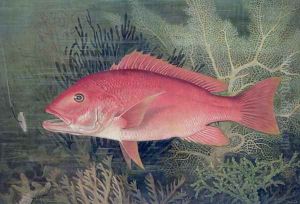S.A. Kilbourne Paintings
Sherman Foote Kilbourne, commonly known as S.A. Kilbourne, was an American artist and illustrator born in 1836. Though not as widely recognized as some of his contemporaries, Kilbourne made significant contributions to the field of natural history illustration and early American lithography. His work is characterized by detailed and accurate depictions of wildlife, particularly fish, a subject to which he dedicated much of his artistic pursuit.
Kilbourne's early life is somewhat obscure, but it is known that he developed an interest in the natural sciences alongside his artistic talents. This dual interest guided his career, leading him to contribute illustrations to scientific publications and projects. One of his most notable contributions was to the ichthyology section of 'The Fisheries and Fishery Industries of the United States', a comprehensive work published by the United States Commission of Fish and Fisheries in the late 19th century. This monumental work aimed to document and study fish species in the United States and their economic importance, and Kilbourne's illustrations were crucial in bringing the text to life.
Despite the quality and significance of his work, Kilbourne did not achieve widespread fame during his lifetime. He worked in a period when the field of natural history illustration was highly competitive, and many talented artists were contributing to scientific and popular publications. Furthermore, the advent of photography and changes in printing technology were beginning to transform the landscape of illustration, making it more challenging for traditional illustrators to find their place.
Kilbourne's death in 1881 marked the end of a career that, though not widely celebrated, was deeply impactful in the niche field of ichthyological illustration. His work remains a valuable resource for scientists and historians, offering a glimpse into the rich biodiversity of 19th-century America and the early efforts to study and document it. Today, Kilbourne's illustrations can be found in the collections of natural history museums, libraries, and in the archives of the institutions he contributed to, appreciated by a small but dedicated group of historians and biologists who recognize the importance of his contributions to American science and art.
